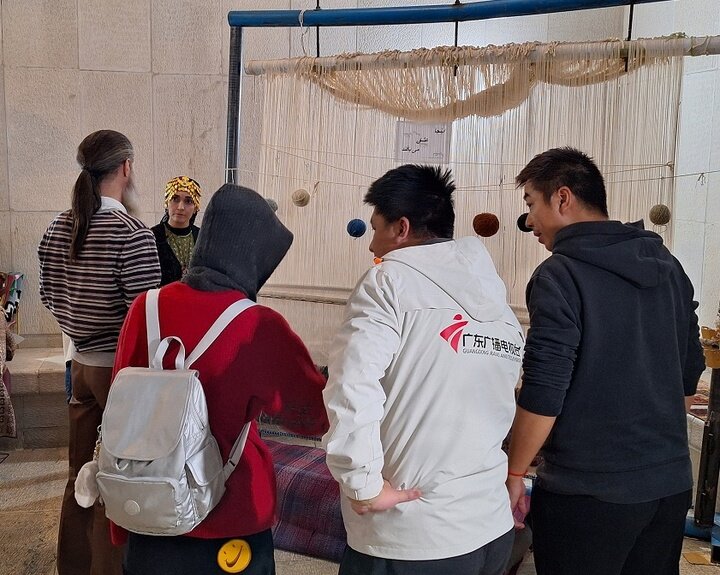Chinese media crew initiates documentary project at Iran’s carpet museum

TEHRAN - A group of Chinese documentarians has commenced preparations for filming a documentary at the Carpet Museum of Iran, marking the initial stages of their project during their visit.
These documentarians are affiliated with China’s national network and broadcast their programs through the Guangdong provincial network, CHTN reported on Tuesday.
Their primary objective is to produce and broadcast a documentary covering various cultural aspects of Iran on Chinese national television, the report said.
The head of this documentary team stated, “The cultural affinity between Iran and China, along with the deep-rooted cultural heritage of both countries, coupled with the interest of Chinese tourists in the Carpet Museum, inspired this documentary initiative.”
The visit of these Chinese filmmakers to the Carpet Museum signifies a collaborative effort between nations to showcase and promote cultural exchange on a global platform.
Covering an area of 3,400 square meters, the Carpet Museum of Iran boasts a treasure trove of some 2,000 Persian carpets that date from the Safavid era onwards. It also puts on display a rich patchwork of rare and centuries-old rugs, kilims, and tableau rugs.
Glimpses of Persian carpets
The art of carpet weaving has been an integral part of Iranian culture and tradition for millennia. They have long been sought after internationally due to their extraordinary quality and delicate designs.
Some say each handmade carpet is a scene that seems ageless, a procedure that can take as long as a year.
To complete their work, weavers spend several months sitting in front of a loom, stringing and knotting thousands of threads. These efforts have long put Iran’s carpets among the most complex and labor-intensive handicrafts in the world. When the weaving is finally done, the carpet is cut, washed, and put out in the sun to dry.
Throughout history, invaders, politicians, and even enemies have left their impact on Iran’s carpets. As mentioned by the Britannica Encyclopedia, little is known about Persian carpet-making before the 15th century, when art was already approaching a peak.
For instance, the Mongol invasion of the 13th century depressed Persia’s artistic life, only partially restored by a revival under the Mongol Il-Khan dynasty (1256–1353). Although the conquests of Timur (who died in 1405) were in most respects disastrous to Persia, he favored artisans and spared them to work on his great palaces in Samarkand.
Later in the 17th century, there was a growing demand for the production of many gold and silver-threaded carpets that were ultimately exported to Europe. Some were made in Kashan, but many of the finest came from Isfahan. With their high-keyed fresh colors and opulence, they have affinities with European Renaissance and Baroque idioms.
At the beginning of the 18th century, nomads and town dwellers were still making carpets using dyes developed over centuries, each group maintaining an authentic tradition. Not made for an impatient Western market, these humbler rugs of the “low school” are frequently beautifully designed and are of good material and technique.
AFM
